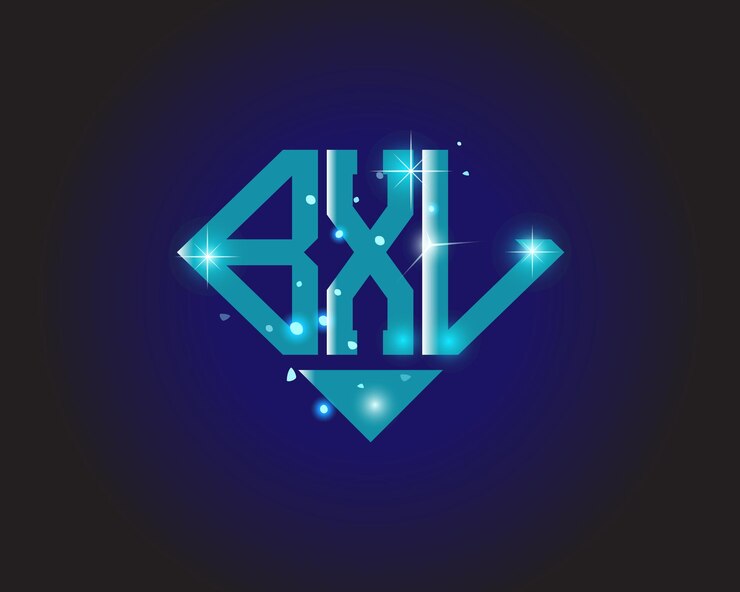In the ever-evolving world of cryptocurrencies, there’s a constant emergence of new projects and tokens aiming to solve different challenges within the blockchain ecosystem. One of these notable projects is SKL, the native cryptocurrency of the Skale Network. SKL crypto has been gaining significant attention due to its unique approach to blockchain scalability, security, and cost-efficiency, making it increasingly popular in the crypto community. In this article, we’ll explore what SKL crypto is, how it works, the Skale Network’s design and purpose, and the reasons behind its rising popularity.
Understanding SKL Crypto and the Skale Network
To understand SKL crypto, it’s essential first to understand the Skale Network, as SKL is its native cryptocurrency. Skale Network is a blockchain platform specifically designed to enhance the performance and scalability of decentralized applications (dApps) on the Ethereum blockchain. Ethereum, while widely used and highly secure, has faced issues with scalability and high transaction fees, often making it challenging for dApps to operate efficiently. Skale Network aims to address these issues by offering an Ethereum-compatible scaling solution, providing a fast and cost-effective infrastructure for dApp developers and users.
Skale Network was co-founded by Jack O’Holleran and Stan Kladko, both of whom have backgrounds in blockchain technology and a deep understanding of the technical challenges within the blockchain ecosystem. The network allows developers to create highly efficient, scalable, and secure applications by leveraging its unique approach to Ethereum Layer 2 scaling.
What is SKL Crypto?
SKL is the native cryptocurrency or token of the Skale Network. It serves multiple purposes within the ecosystem, acting as a utility token that fuels the network’s operations and provides incentives for network participants. The primary functions of SKL crypto include:
- Staking: Validators on the Skale Network are required to stake SKL tokens to participate in validating transactions and maintaining the network’s security. In return, validators are rewarded with additional SKL tokens as an incentive for their contributions.
- Governance: SKL token holders have governance rights on the Skale Network. This means they can participate in voting on critical network upgrades, protocol changes, and other proposals that impact the network’s direction and functionality.
- Payments for dApps: Developers who deploy their applications on the Skale Network use SKL tokens to pay for resources such as bandwidth, storage, and computational power. This ensures that dApps operate efficiently while maintaining low costs.
The versatility and utility of SKL crypto within the Skale Network ecosystem are primary reasons for its growing adoption and popularity.
How Skale Network Works
The Skale Network uses a unique approach to achieve scalability and performance, employing an Ethereum Layer 2 scaling solution. It operates as a network of independent and interoperable blockchains, or “sidechains,” which run parallel to the main Ethereum blockchain. Here’s a closer look at how Skale Network achieves scalability and enhances dApp performance:
- Elastic Sidechains: Skale Network provides developers with the ability to create “elastic sidechains” that operate independently of the Ethereum mainnet. These sidechains are highly customizable and can be tailored to meet specific dApp requirements in terms of computational resources, storage, and security.
- Compatibility with Ethereum: Skale Network is fully compatible with Ethereum, meaning dApps built on Skale can seamlessly interact with Ethereum’s mainnet. This compatibility enables developers to leverage Ethereum’s robust ecosystem, while also enjoying Skale’s scalability and low-cost transaction benefits.
- High-Throughput and Low Latency: One of the most significant advantages of Skale Network’s sidechains is their high throughput and low latency. Transactions processed on Skale’s sidechains are much faster than those on the Ethereum mainnet, making it an ideal solution for dApps that require quick and efficient transactions, such as decentralized finance (DeFi) applications, gaming platforms, and NFTs.
- Resource Allocation and Payments: Developers pay for the resources their applications consume on the Skale Network using SKL tokens. This “pay-as-you-go” model ensures that developers only pay for the resources they need, reducing operational costs significantly compared to other blockchain networks.
- Enhanced Security: Despite its decentralized nature, Skale Network uses various security measures, such as BLS (Boneh–Lynn–Shacham) cryptography, to maintain network integrity and protect user data.
Key Features of SKL Crypto and Skale Network
The Skale Network’s infrastructure offers several unique features that make it an attractive choice for developers and users alike:
- Scalability: Skale Network can scale horizontally, adding more chains to accommodate an increasing number of dApps and users. This capability helps the network maintain optimal performance even as it grows.
- Cost-Efficiency: By allowing dApps to operate on sidechains, Skale Network significantly reduces the cost of transactions compared to Ethereum’s mainnet fees. This cost efficiency is crucial for dApps with high transaction volumes, as it ensures they remain financially viable.
- Customizable Sidechains: Developers can customize their sidechains on Skale Network according to their dApp’s specific requirements. This flexibility makes it easier to build applications that meet user needs and perform well.
- Interoperability: Skale Network is compatible with Ethereum’s ERC-20 token standard, making it easy for projects on Ethereum to migrate or expand to Skale. This interoperability expands the potential user base for dApps on the Skale Network.
- Low-Latency Transactions: Skale Network’s sidechains enable fast transactions with minimal latency, providing a seamless user experience for applications where speed is crucial.
- Enhanced Security Measures: In addition to staking, Skale Network utilizes advanced cryptographic algorithms, such as BLS signatures, to enhance its security and protect the integrity of transactions.
Why is SKL Crypto Gaining Popularity?
Several factors contribute to the growing popularity of SKL crypto and the Skale Network. As blockchain technology matures, developers and users are increasingly seeking solutions that address the limitations of earlier networks, such as Ethereum’s scalability and cost issues. Here are some of the primary reasons why SKL crypto is gaining traction:
1. Ethereum Compatibility and Scaling Solution
One of the most appealing aspects of Skale Network is its compatibility with Ethereum. As the most widely used blockchain for dApps, Ethereum’s network is often congested, resulting in high transaction fees and slow processing times. Skale Network’s sidechain architecture offers a seamless scaling solution that reduces costs and speeds up transactions while remaining compatible with Ethereum’s ecosystem. This compatibility makes it easy for Ethereum-based projects to migrate to Skale without losing access to Ethereum’s user base, tools, and developer community.
2. Focus on dApp Development
Skale Network is tailored specifically for decentralized applications, addressing the needs of developers by providing customizable resources. dApps can operate efficiently on Skale’s sidechains without dealing with Ethereum’s high fees, making it an attractive option for developers of DeFi, NFT, and gaming applications. The cost-efficiency of Skale Network enables dApps to scale as they grow, which is crucial for long-term success.
3. Community-Driven Governance
SKL token holders have a say in the governance of the Skale Network, a feature that appeals to many in the crypto community. This decentralized governance model allows SKL holders to vote on protocol upgrades and other important decisions, ensuring that the network evolves based on the community’s input. This approach fosters a sense of ownership and participation among SKL holders, contributing to the token’s popularity.
4. High-Performance Infrastructure for Web3 Applications
Skale Network is often regarded as a “Web3” infrastructure because of its ability to support decentralized applications that prioritize user privacy, security, and ownership of data. Web3 applications are gaining traction as people become more aware of the importance of decentralization and data ownership. By offering a high-performance platform for Web3 applications, Skale Network positions itself as an essential player in the decentralized internet, further boosting SKL’s popularity.
5. Active Development and Partnerships
Skale Network is actively working to expand its ecosystem through partnerships with other blockchain projects, DeFi platforms, and enterprise-level applications. These partnerships increase Skale’s visibility, bring new users to the network, and drive demand for SKL tokens. Additionally, the Skale team’s continuous efforts to enhance the network’s functionality and features demonstrate their commitment to creating a reliable and innovative platform.
6. Environmental Sustainability
Skale Network employs a Proof-of-Stake (PoS) consensus mechanism, which is significantly more energy-efficient than Proof-of-Work (PoW) models like Bitcoin. As environmental concerns around blockchain technology continue to grow, projects like Skale Network, which focus on sustainability, are becoming more appealing. By staking SKL tokens, participants contribute to the network’s security without the environmental impact associated with mining, making SKL crypto an eco-friendly option.
7. Increased Demand for DeFi Solutions
The demand for decentralized finance (DeFi) solutions is growing rapidly, and Skale Network is well-positioned to support the needs of DeFi applications. DeFi platforms require high transaction throughput, low fees, and secure infrastructure to facilitate decentralized lending, borrowing, trading, and more. Skale Network’s scalability and cost-efficiency make it an ideal choice for DeFi projects, driving demand for SKL tokens and enhancing its popularity in the DeFi space.
The Future of SKL Crypto and Skale Network
The future of SKL crypto and Skale Network appears promising, especially as more developers and users recognize the benefits of scalable, cost-efficient, and secure blockchain solutions. As Ethereum continues to struggle with scalability issues, Skale Network’s Ethereum-compatible sidechains are likely to gain more traction as an alternative for dApp developers. Additionally, Skale’s focus on Web3 and DeFi aligns well with the current trends in the blockchain space, where decentralization, security, and user empowerment are paramount.
Furthermore, as blockchain technology matures, the demand for scalable solutions like Skale Network will continue to grow. The network’s active development team and commitment to innovation indicate that Skale will likely keep evolving and expanding its capabilities, further solidifying its place within the blockchain ecosystem.
Conclusion: The Growing Relevance of SKL Crypto
In summary, SKL crypto and Skale Network are gaining popularity for their innovative approach to solving blockchain scalability, cost, and performance challenges. By providing an Ethereum-compatible scaling solution through its network of elastic sidechains, Skale Network enables dApp developers to operate efficiently without the high fees and congestion of Ethereum’s mainnet. SKL crypto’s utility as a staking, governance, and payment token within this ecosystem further contributes to its appeal, offering holders an opportunity to participate in the network’s growth and development actively.
The rising demand for decentralized finance, Web3 applications, and environmentally sustainable blockchain solutions positions Skale Network as a valuable player in the industry. With a dedicated team, a growing list of partnerships, and a focus on continuous innovation, SKL crypto and the Skale Network are well-positioned to play a significant role in the future of decentralized applications. As blockchain technology advances, it’s likely that Skale Network and SKL crypto will continue to attract interest from developers, investors, and users seeking scalable and cost-effective solutions in the blockchain space.



